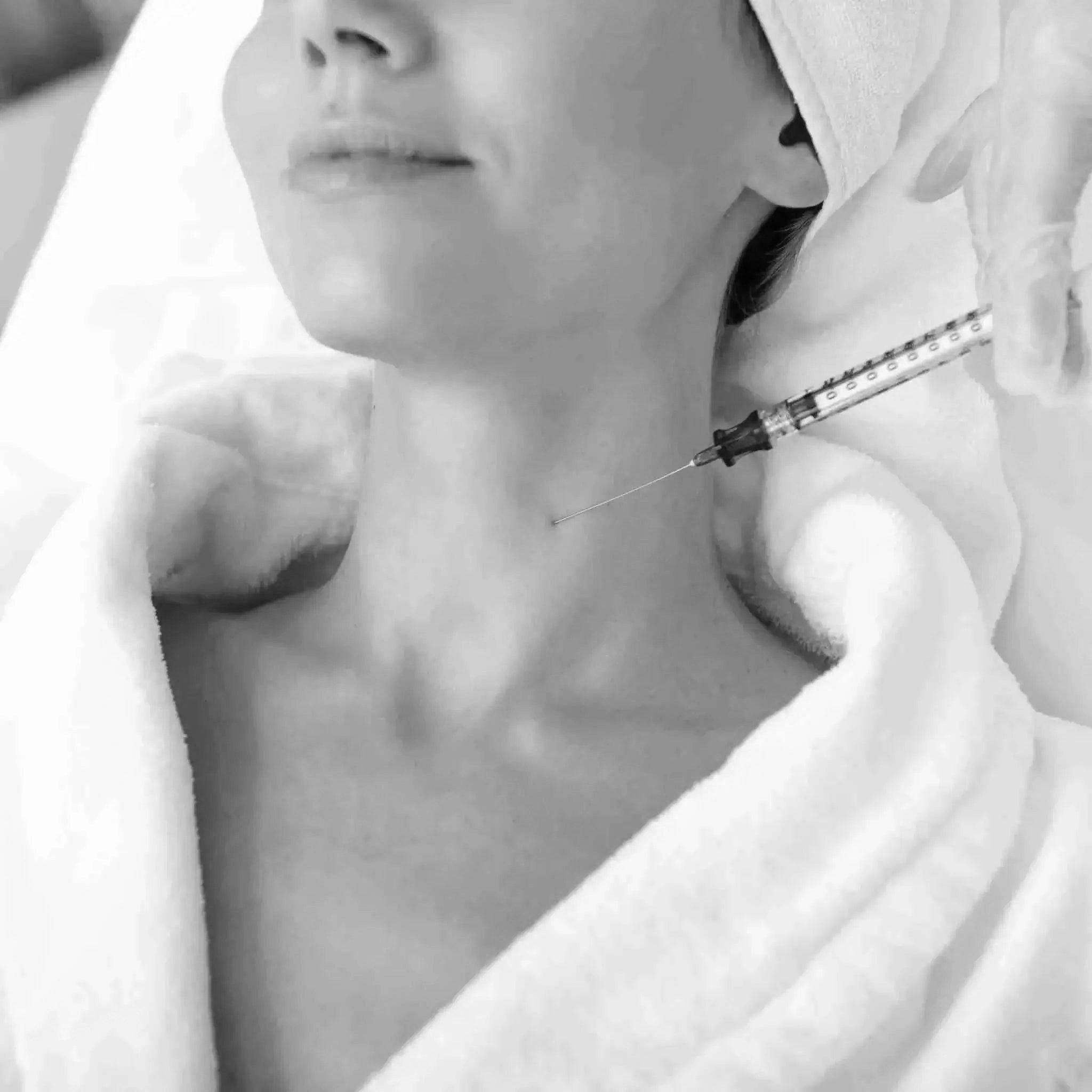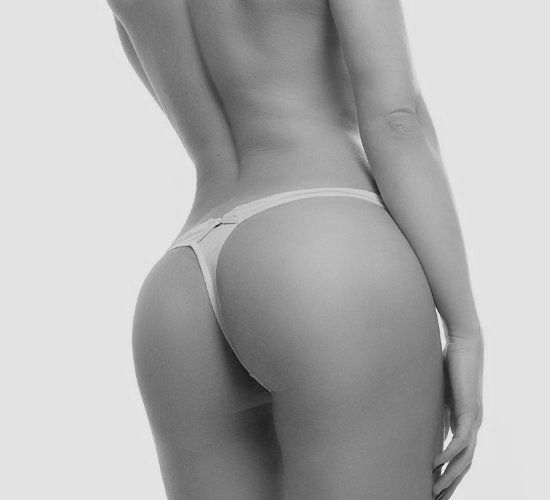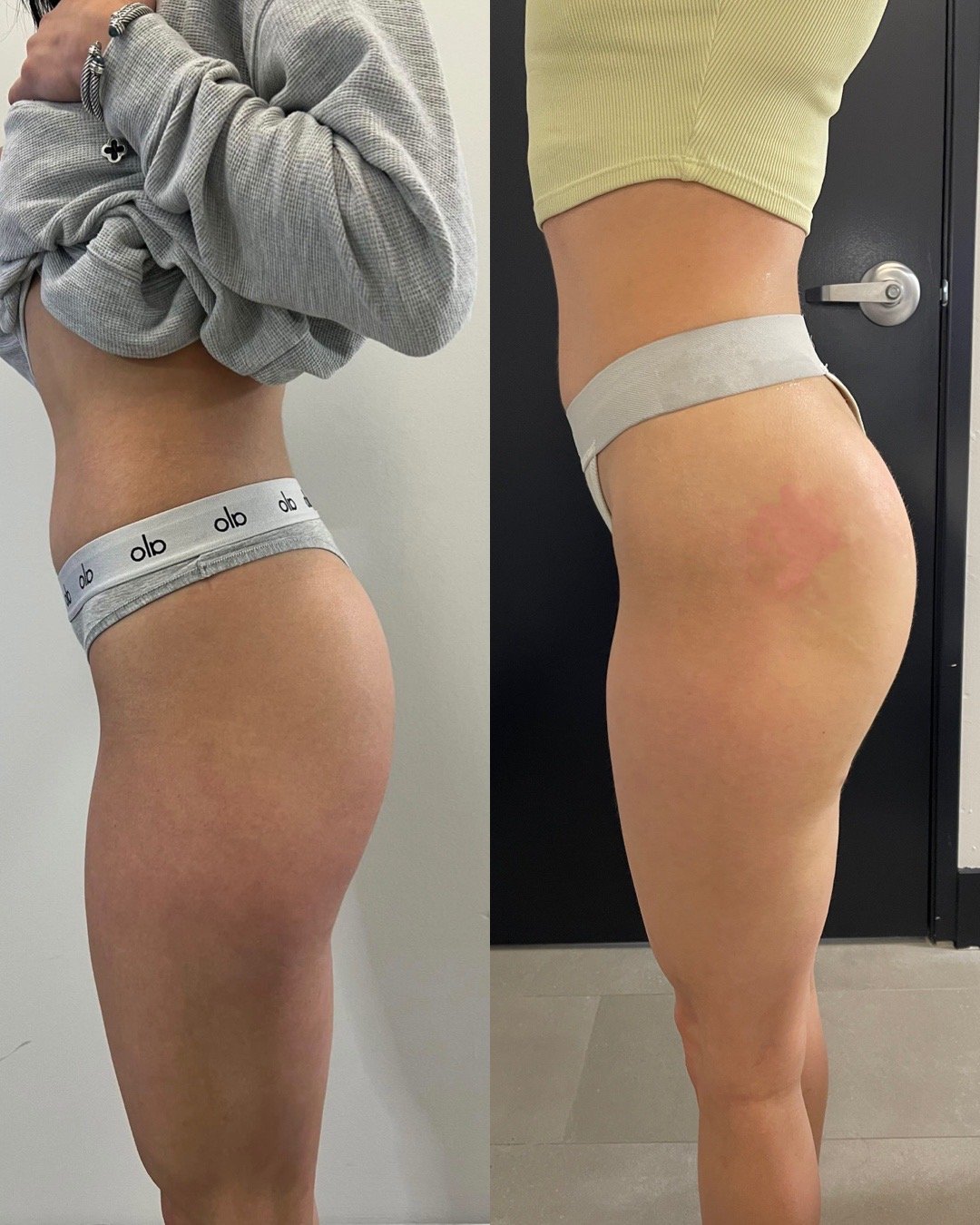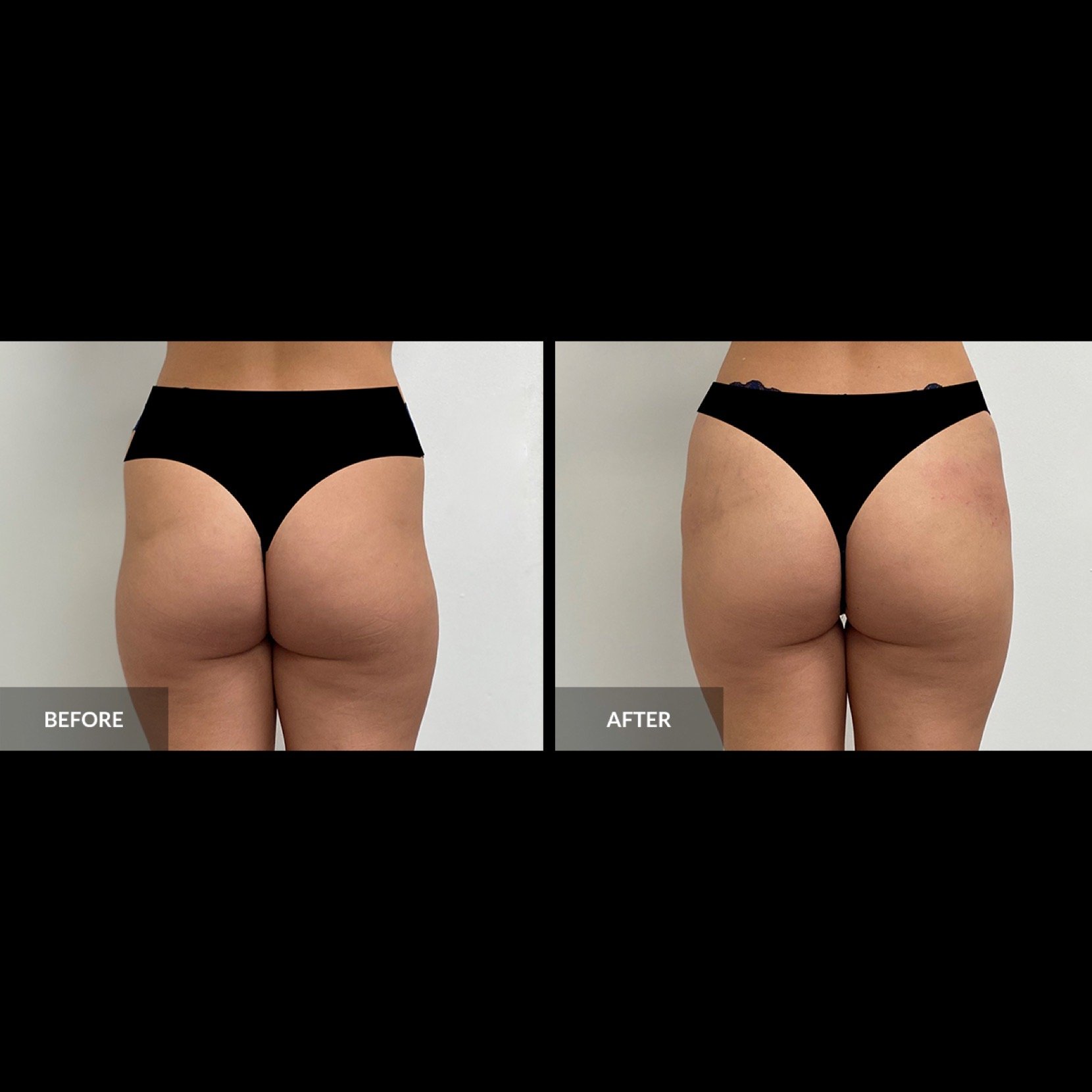WHAT IS AN ULTRASOUND FACIAL VOLUME LOSS ASSESSMENT FOR GLP-1 PATIENTS?
GLP-1 medications like Ozempic, Wegovy, Mounjaro, Zepbound, and compounded semaglutide/tirzepatide can cause rapid weight loss — which sometimes leads to facial volume loss, commonly called “GLP-1 face” or “Ozempic face.”
While many providers guess where the fat loss occurred, plump medical spa uses the Butterfly iQ3, an AI-enhanced high-frequency ultrasound system, to measure and map your actual facial fat pads.
This gives you a medical, data-driven assessment of:
How much facial fat you’ve lost
Which fat pads have thinned
Whether you lost deep fat, superficial fat, or both
Whether your facial muscles are contributing
Whether your midface support structure has dropped
Where filler or biostimulators would benefit you most
Whether you need lifting, tightening, or volume
This is the most accurate way to assess GLP-1–related facial changes in Orange County.
WHY GLP-1 MEDS CAUSE FACIAL VOLUME LOSS
GLP-1 medications accelerate fat loss, especially in areas where the fat pads are delicate:
Midface
Tear troughs
Nasolabial folds
Temples
Jawline
Buccal region
Perioral area
Pre-jowl sulcus
The problem isn’t just “losing weight.”
It’s losing structural fat that keeps the face lifted and youthful.
Ultrasound helps distinguish:
So your treatment isn’t guesswork — it’s guided by imaging.
WHAT THE BUTTERFLY iQ3 ULTRASOUND CAN MEASURE
Using AI-lifted image clarity, Butterfly iQ3 provides:
• Facial Fat Pad Thickness Measurements
Cheek, infraorbital, buccal, temple, jawline, and perioral pads.
• Deep vs Superficial Fat Mapping
Critical for understanding GLP-1 effects.
• Midface Support Loss
Shows whether the fat pads have dropped or simply deflated.
• Skin Thickness & Elasticity Patterns
Helps evaluate whether a laser, energy device, or filler is appropriate.
• Presence of Old Filler
Many GLP-1 patients still have filler from past treatments that affects the plan.
• Bone Shadowing & Structural Angles
Useful for patients with rapid weight loss or muscle thinning.
• Before vs After Comparison Imaging
Excellent for patients actively losing weight on GLP-1.
WHO THIS ASSESSMENT IS IDEAL FOR
Patients on Ozempic, Wegovy, Mounjaro, Zepbound, or compounded GLP-1s
Rapid weight loss patients
Anyone experiencing “sunken” cheeks or a tired appearance
Patients who feel their face is aging faster than their body
Those considering fillers, Sculptra, Radiesse, or lifting
Patients unsure whether they need volume, lift, tightening, or all three
Anyone wanting data-driven aesthetics, not guessing
Patients who want conservative, natural treatment plans
WHAT WE CAN DIAGNOSE DURING THE ULTRASOUND
1. Loss of Deep Fat Pads
Often responsible for a gaunt or hollow look.
2. Superficial Fat Loss
Leads to sagging, creasing, and facial flattening.
3. Volume Loss Patterns
We map which regions lost volume first.
4. GLP-1–Associated Hollowing
Especially common in temples, under eyes, and midface.
5. Jawline Deflation
Loss of mandibular fat pad support.
6. Pre-jowl Sinking
Creates premature jowls.
7. Buccal Fat Decrease
Causes a more angular look.
8. Loss of Skin Support
Where collagen breakdown becomes evident.
THE PLUMP MEDICAL SPA ULTRASOUND APPROACH
Every GLP-1 face volume loss assessment includes:
1. Consultation & History Review
Medication type, duration, weight loss timeline, symptoms.
2. Full Facial Ultrasound Mapping with Butterfly iQ3
Deep & superficial fat pads are measured precisely.
3. Data-Driven Volume Plan
Based on your unique fat loss pattern, we determine:
Filler vs biostimulators
Lifting vs tightening
Where volume is needed
How much is appropriate
Whether you need cheek support before tear troughs
Whether the jawline needs structural rebuild
If your temples need volume first
4. Visual Explanation
You’ll see your own anatomy on-screen — the most educational experience patients get.
5. Customized Correction Plan
Could include:
6. Follow-Up Imaging
Optional repeat imaging during your GLP-1 weight loss journey.
WHAT IS AN ULTRASOUND FACIAL VOLUME LOSS ASSESSMENT FOR GLP-1 PATIENTS?
GLP-1 medications like Ozempic, Wegovy, Mounjaro, Zepbound, and compounded semaglutide/tirzepatide can cause rapid weight loss — which sometimes leads to facial volume loss, commonly called “GLP-1 face” or “Ozempic face.”
While many providers guess where the fat loss occurred, plump medical spa uses the Butterfly iQ3, an AI-enhanced high-frequency ultrasound system, to measure and map your actual facial fat pads.
This gives you a medical, data-driven assessment of:
How much facial fat you’ve lost
Which fat pads have thinned
Whether you lost deep fat, superficial fat, or both
Whether your facial muscles are contributing
Whether your midface support structure has dropped
Where filler or biostimulators would benefit you most
Whether you need lifting, tightening, or volume
This is the most accurate way to assess GLP-1–related facial changes in Orange County.
WHY GLP-1 MEDS CAUSE FACIAL VOLUME LOSS
GLP-1 medications accelerate fat loss, especially in areas where the fat pads are delicate:
Midface
Tear troughs
Nasolabial folds
Temples
Jawline
Buccal region
Perioral area
Pre-jowl sulcus
The problem isn’t just “losing weight.”
It’s losing structural fat that keeps the face lifted and youthful.
Ultrasound helps distinguish:
So your treatment isn’t guesswork — it’s guided by imaging.
WHAT THE BUTTERFLY iQ3 ULTRASOUND CAN MEASURE
Using AI-lifted image clarity, Butterfly iQ3 provides:
• Facial Fat Pad Thickness Measurements
Cheek, infraorbital, buccal, temple, jawline, and perioral pads.
• Deep vs Superficial Fat Mapping
Critical for understanding GLP-1 effects.
• Midface Support Loss
Shows whether the fat pads have dropped or simply deflated.
• Skin Thickness & Elasticity Patterns
Helps evaluate whether a laser, energy device, or filler is appropriate.
• Presence of Old Filler
Many GLP-1 patients still have filler from past treatments that affects the plan.
• Bone Shadowing & Structural Angles
Useful for patients with rapid weight loss or muscle thinning.
• Before vs After Comparison Imaging
Excellent for patients actively losing weight on GLP-1.
WHO THIS ASSESSMENT IS IDEAL FOR
Patients on Ozempic, Wegovy, Mounjaro, Zepbound, or compounded GLP-1s
Rapid weight loss patients
Anyone experiencing “sunken” cheeks or a tired appearance
Patients who feel their face is aging faster than their body
Those considering fillers, Sculptra, Radiesse, or lifting
Patients unsure whether they need volume, lift, tightening, or all three
Anyone wanting data-driven aesthetics, not guessing
Patients who want conservative, natural treatment plans
WHAT WE CAN DIAGNOSE DURING THE ULTRASOUND
1. Loss of Deep Fat Pads
Often responsible for a gaunt or hollow look.
2. Superficial Fat Loss
Leads to sagging, creasing, and facial flattening.
3. Volume Loss Patterns
We map which regions lost volume first.
4. GLP-1–Associated Hollowing
Especially common in temples, under eyes, and midface.
5. Jawline Deflation
Loss of mandibular fat pad support.
6. Pre-jowl Sinking
Creates premature jowls.
7. Buccal Fat Decrease
Causes a more angular look.
8. Loss of Skin Support
Where collagen breakdown becomes evident.
THE PLUMP MEDICAL SPA ULTRASOUND APPROACH
Every GLP-1 face volume loss assessment includes:
1. Consultation & History Review
Medication type, duration, weight loss timeline, symptoms.
2. Full Facial Ultrasound Mapping with Butterfly iQ3
Deep & superficial fat pads are measured precisely.
3. Data-Driven Volume Plan
Based on your unique fat loss pattern, we determine:
Filler vs biostimulators
Lifting vs tightening
Where volume is needed
How much is appropriate
Whether you need cheek support before tear troughs
Whether the jawline needs structural rebuild
If your temples need volume first
4. Visual Explanation
You’ll see your own anatomy on-screen — the most educational experience patients get.
5. Customized Correction Plan
Could include:
6. Follow-Up Imaging
Optional repeat imaging during your GLP-1 weight loss journey.








